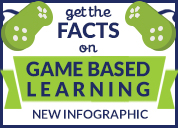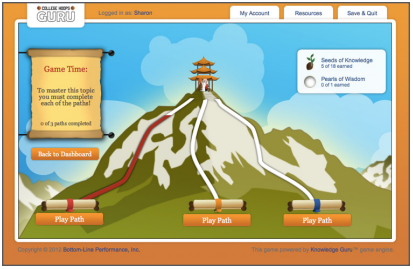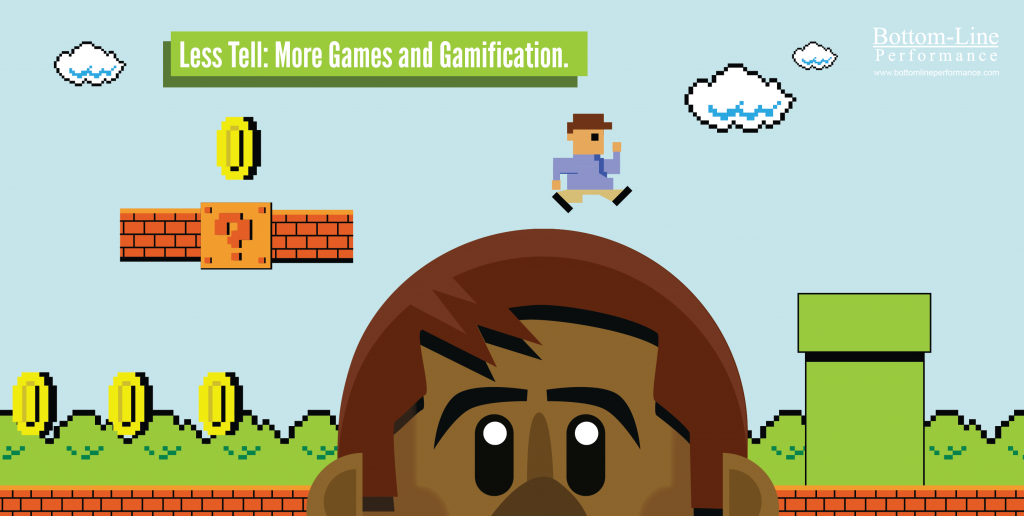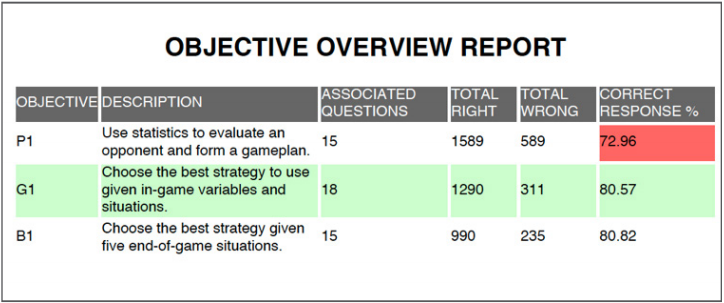 Want a really cool way to get the facts on Game Based Learning? Check out our new Game Based Learning Infographic! We lay out some great examples of the efficacy of game based learning and gamification, all backed by solid research and great case studies. Click Here to view.
Want a really cool way to get the facts on Game Based Learning? Check out our new Game Based Learning Infographic! We lay out some great examples of the efficacy of game based learning and gamification, all backed by solid research and great case studies. Click Here to view.
This is an excerpt from Sharon Boller’s newest white paper, Learning Trends, Technologies and Opportunities. The white paper describes today’s learning landscape… then predicts 7 trends for the next 12 – 18 months. Here is Trend 4:
Today’s learners have decreasing tolerance for a lecture-based approach to learning. (We consider Text and Next eLearning to be the electronic equivalent of lecture-based approach.) Games and gamification are finally getting the recognition they deserve as powerful learning tools. Our own game engine, Knowledge Guru, has a back-end that enables us to literally see what learners accomplish in terms of learning objectives from playing a game created with the engine – something that can’t
happen in a traditional approach.
The Objectives Overview Report: This is a report generated by the back-end of the Knowledge Guru game engine. It shows how well players are achieving objectives. Other reports let administrators view performance at the question level or for an individual player. The data supplied make it easy to see what people are and aren’t learning – and to supplement when
needed.

Path Selection Screen: Game screen within College Hoops Guru, a casual learning game designed to help people understand the game of basketball better so they can enjoy NCAA tournament time more.
 A recent game we developed for the Spirit and Place Festival in Indianapolis called A Paycheck Away lets people literally experience a three-month period of homelessness in the span of 90 minutes. Learners described the experience as “mind-blowing” – something we’ve never heard attached to a lecture or a Text and Next course.
A recent game we developed for the Spirit and Place Festival in Indianapolis called A Paycheck Away lets people literally experience a three-month period of homelessness in the span of 90 minutes. Learners described the experience as “mind-blowing” – something we’ve never heard attached to a lecture or a Text and Next course.
Skepticism, however, remains at the C-level (“If it’s fun, can they really be learning?”), but data about the efficacy of games are extremely compelling. The corporate world needs to pay attention to the data on efficacy because the appeal of games and gamification is high to the learner.
Not convinced? Check out these resources:
• Dr. Richard Blunt, working on behalf of the U.S.Department of Defense, did a rigorous study at
a national university comparing game-basedlearning to traditional approaches. He found “classes using the game had significantly higher means than those classes that did not use the game… both genders scored significantly higher with game play than without… The DoD now has studies proving the efficacy of digital game-based learning and how it can improve learning.”
• Karl Kapp, in his most recent book on games and gamification, has an entire chapter devoted toa list of studies done on game efficacy. He says this research is shared to “show that games andgame elements can be effective in promoting learning and achieving desired outcomes.Games and gamification are tools that, when applied correctly, result in the desired learning
outcomes.”
This trend has the potential to be wrecked in two ways:
1. Over-exploitation of gamification by marketers who try to gamify
EVERYTHING we do, and…
2. Misuse by learning designers who mistake slapping points and badges on things for creating an effective, engaging learning experience.Like the creation of good eLearning, the effective design of a game and the appropriate application of gamification techniques both take skill.
Check back next week for Trend 5, or download the entire white paper now.





